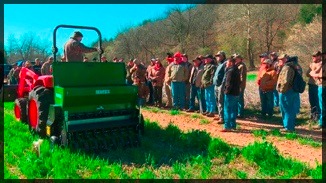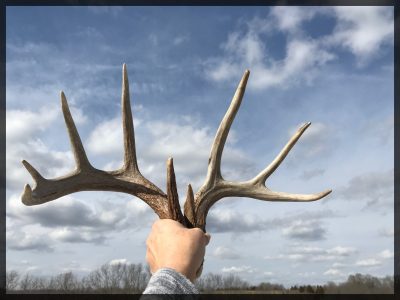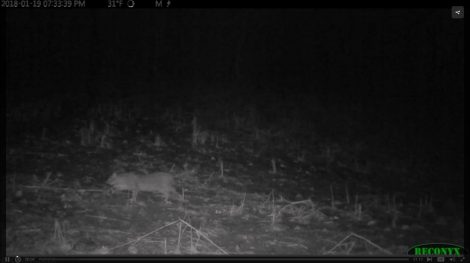Category: White-tailed Deer
How to Estimate Deer Age With the JawBone: Tooth Replacement and Wear
Here is one of the first steps we use to estimate a deer’s age by the jawbone.
When There’s Skull Attached to Shed Antlers
Below you will see a photo of an antler intern Nigel Waring found while creating a fire break.
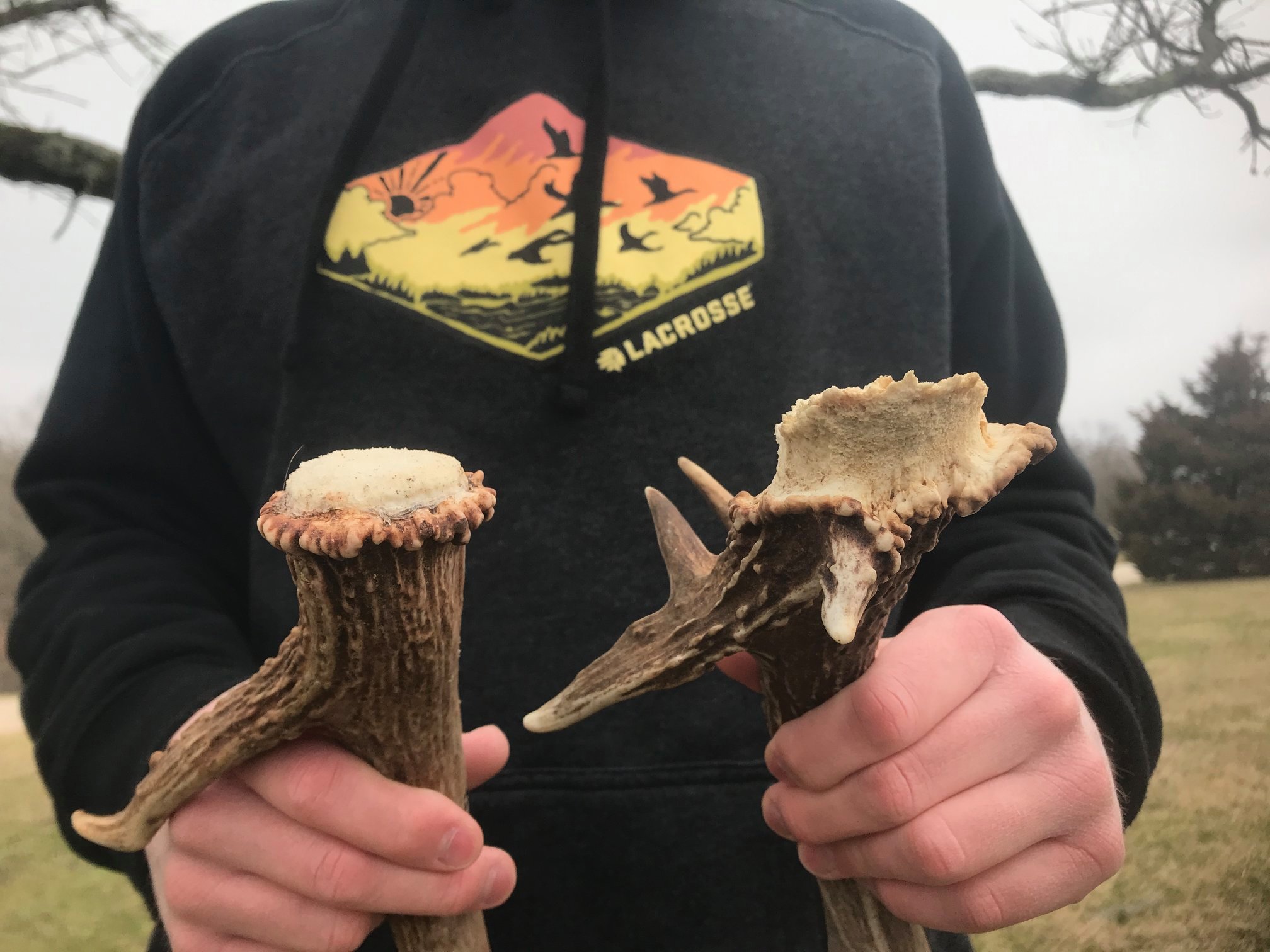
Unfortunately, this antler (shown right) has a large portion of the skull attached to the base. The antler was likely not “shed”, but broken off while sparring, rubbing or during another activity recently. This was most likely caused by an infection that eroded the skull and became a brain abscess. We suspect this buck has expired from the brain abscess due to the amount of bone found on the antler.
Antlers are shed as a response to chemical changes within a buck’s body. These changes are generally stimulated by changes in the amount of time the sun shines daily. However, within this window, several factors such as available nutrition, general health, and dominance ranking can determine when an individual buck sheds his antlers. For example, deer researchers often mention observing two dominate bucks in captivity fighting during this time of year. The loser will shed his antlers soon (sometimes the next day). It seems hard to imagine that antlers will simply fall off one day due to a change in dominance status (along with hormone levels) but these examples seem to indicate that’s the case. Never underestimate the effects of hormones on all critters!
Antlers for most bucks tend to be shed during the late winter months. However, some bucks will shed earlier due to other factors. Generally speaking, the healthier the herd, the longer bucks will hold their antlers! I like seeing some bucks with antler during Missouri’s turkey season! Bucks healthy enough to hold antlers that late into the winter are an excellent indicator of a healthy deer herd. It also indicates that the habitat is likely good for turkeys also!
The antler shown on the left is one that shed clean and is rounded at the base. Based on these characteristics, this buck (left shed) was likely very healthy when he shed the antler. You can learn a lot by studying antlers/sheds!
To learn more about brain abscesses, watch the next episode coming up Monday on GrowingDeer!
The Trick to Aging Bucks In Summer
Many deer hunters, including myself, enjoy using trail cameras during July to see how antlers are developing and the age structure of bucks where they will be hunting.
Estimating a buck’s age during the growing season can be difficult. Bucks aren’t producing as much testosterone during this time of year and therefore they don’t appear as muscular or bulked up.
These conditions often result in estimates of bucks’ ages being younger than they are.
As an example, we recently posted a current Reconnyx image of a buck we call Ringer 8 on social media and asked for estimates of his age. This buck has displayed similar antler characteristics year to year, which has made it possible to identify him.. We have images of Ringer 8 for 4 years and feel confident he’s 8+ years old.
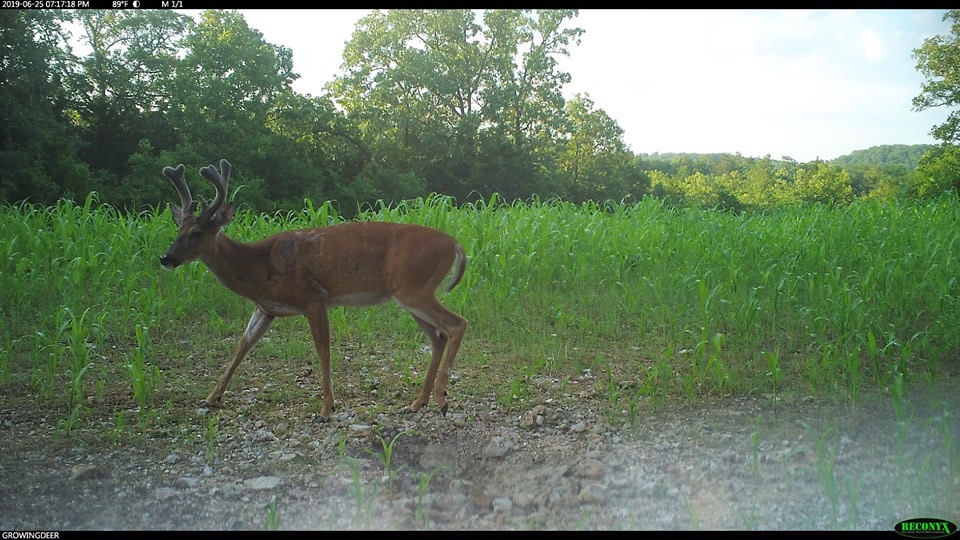
Most folks underestimated his age. They judged him to be 2 or 3 years old!
You may believe most estimates were too young because Ringer 8’s antlers are small for his age. However, we find the same trend when posting images of bucks with relatively large antlers for their age.
Most images in magazines, taxidermy, etc., show bucks during the peak of the rut when bucks’ testosterone levels are high and bucks are at their physical peak. It seems we get conditioned to expect bucks to appear in this shape year-round.
There are some physical traits that don’t change with the influx of testosterone during the early fall. Bucks with a pot belly and/or swayed back show these characteristics during the summer and fall. Another characteristic of mature bucks is that their brisket hangs below their chest during both the summer and fall.
Rather than estimating a buck’s age based on antler size, this year try studying the body characteristics. I believe your estimates will be more accurate.
Enjoy Creation and I hope our paths cross soon!
Grant
How Trail Cameras Can Be Useful Throughout All Seasons
We leave our Reconyx trail cameras out year around. This allows us to learn much more than deer travel patterns and current antler size. For example, one of our cameras recently took these photos in sequence. The camera that took these photos was located on the downhill side of a bedding area. Even during the summer, thermals carry scent downhill as the evening air cools.
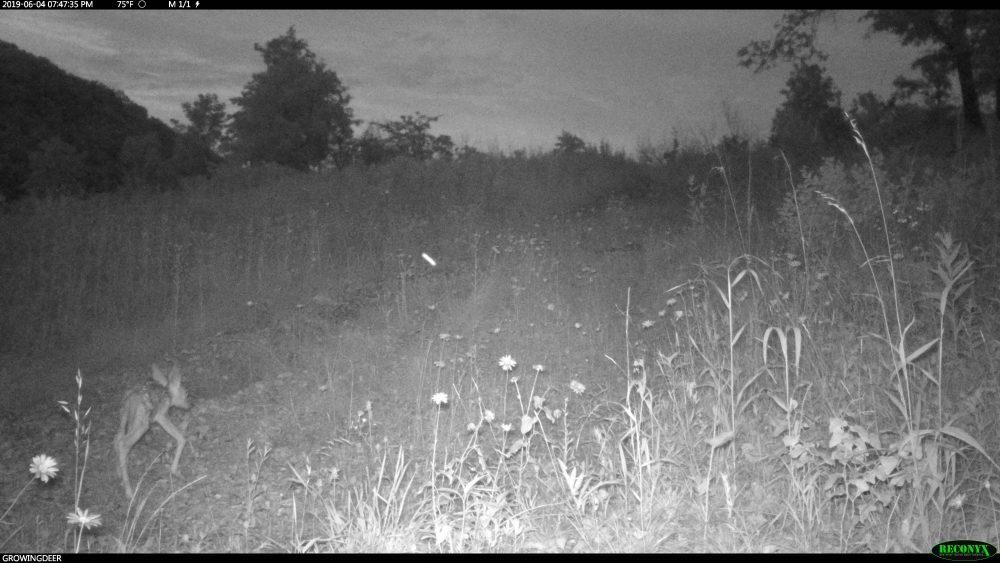
Based on these pictures, it seems likely that this fawn bedded toward the bottom of the bedding area and not far from the interior road’s edge. Just a few hours later there is a coyote and a doe (possibly the fawn’s mother) in the same area. We don’t know exactly what happened but this is a strong reminder of how predators hunt. They often cruise the downhill side of area where prey will be at that time of day. Coyotes are well documented as extremely effective fawn predators. This is why we trap yearly to help balance the number to predators with prey species and work hard to provide quality fawning and nesting habitat. (The Reconyx trail cameras picked up a video of this fawn. You may watch it HERE.)
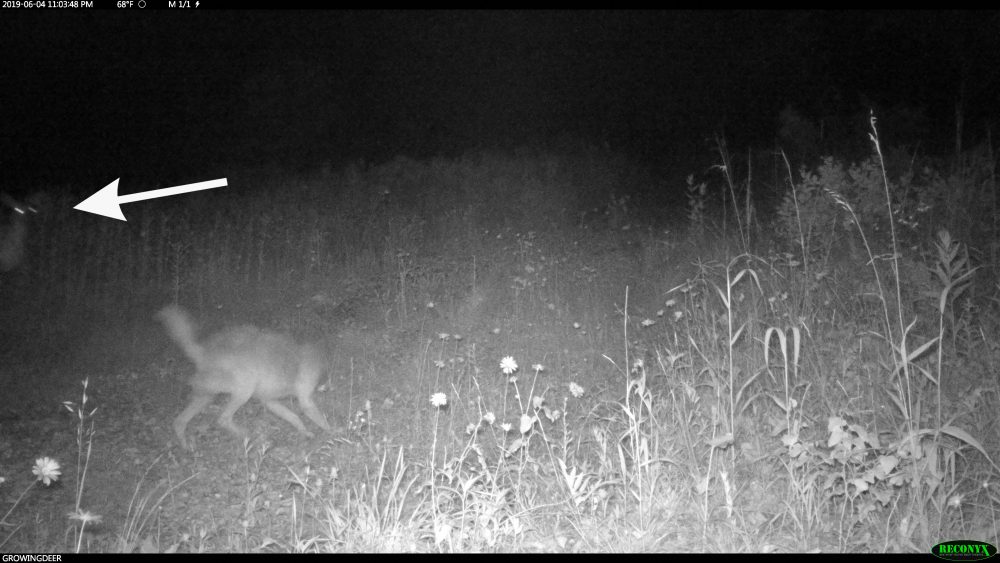
Two-legged hunters can learn from this series of images. We need to approach, hunt, and exit from the downwind side of where deer are likely to be while we are hunting. Using trail cameras throughout the year and moving them frequently is a great way to find stand/blind locations and learn from the best predators!
Enjoy Creation,
Grant
Post Season Review: Antlers, Culling and Feeding – Episode #429
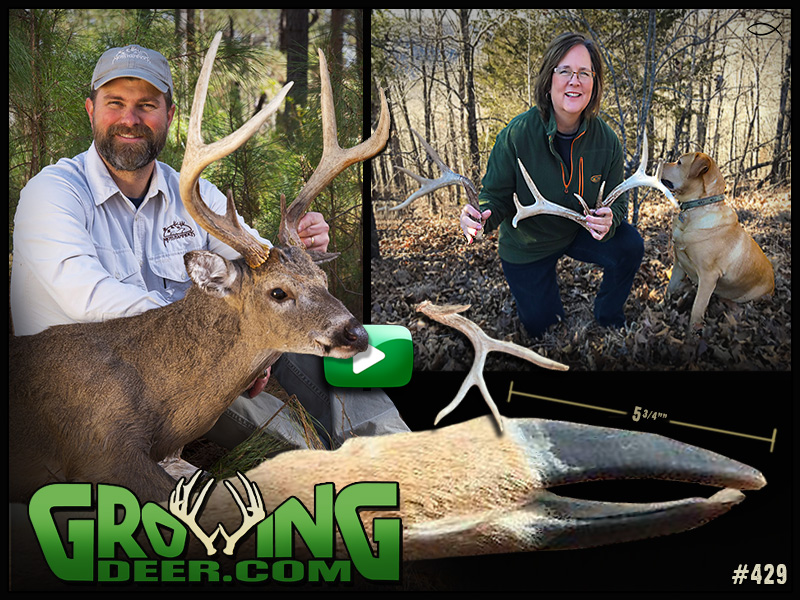 New Video
New Video
Grant gives a post-season update about several hit list bucks. Plus, learn why “culling” bucks should be avoided and how sudden post season feeding programs can actually harm deer.
spring field days 2018:
Visit The Proving Grounds during Spring Field Days to see how the GrowingDeer Team manages wildlife and habitat! Register now!
new weekly blog:
Tracy shares the secret to finding shed antlers. Click here to find out what it is.
Short VIDEO:
The Reconyx trail cameras caught a lot of action from the bobcats. These critters are on the prowl!
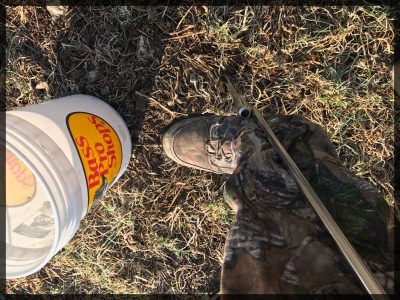
Tip of the Week:
Soil samples can help food plotters know exactly what does and doesn’t need to be added to the soil. Save money on fertilizer this spring by conducting soil samples now!
Shed Hunting Fools
We get so excited when we find a shed antler here at The Proving Grounds. It’s fun to share the excitement of finding antlers on Facebook and in our weekly episodes. You may be wondering what the secret is to finding all those antlers.
The secret to finding shed antlers is one word: persistence!
When I start to get discouraged I remind myself that it is impossible to find antlers if I am at the office sitting at my desk (or at home cleaning, cooking, watching TV) and not getting out into the woods. At least by getting out for an hour here and there, the odds increase in favor of finding an antler.
Staying motivated while shed hunting is a mental game. You have to congratulate yourself when you “spy” the unusual in the woods or the food plot: the turkey feather, the blue jay feathers, squirrel skull, etc. Congratulate yourself because your eyes are still working and seeking out the “difference” in the landscape.
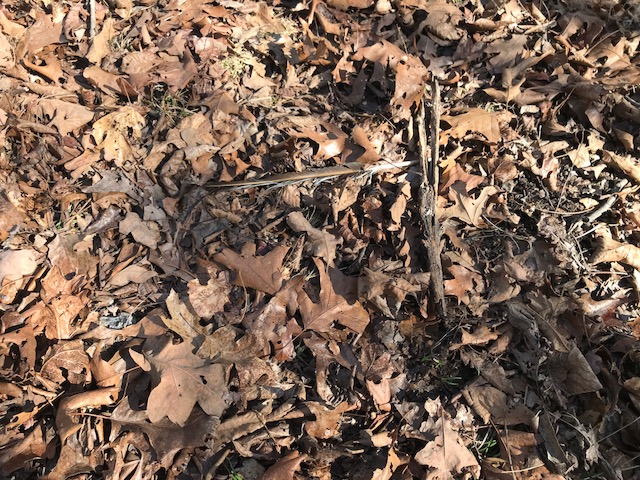
Did you notice this is a feather and not a stick?

Congratulate yourself when you spy the unusual in the landscape.
The old bones, weird rocks, or antler shaped sticks are the kind of things I call “shed hunting fools”.
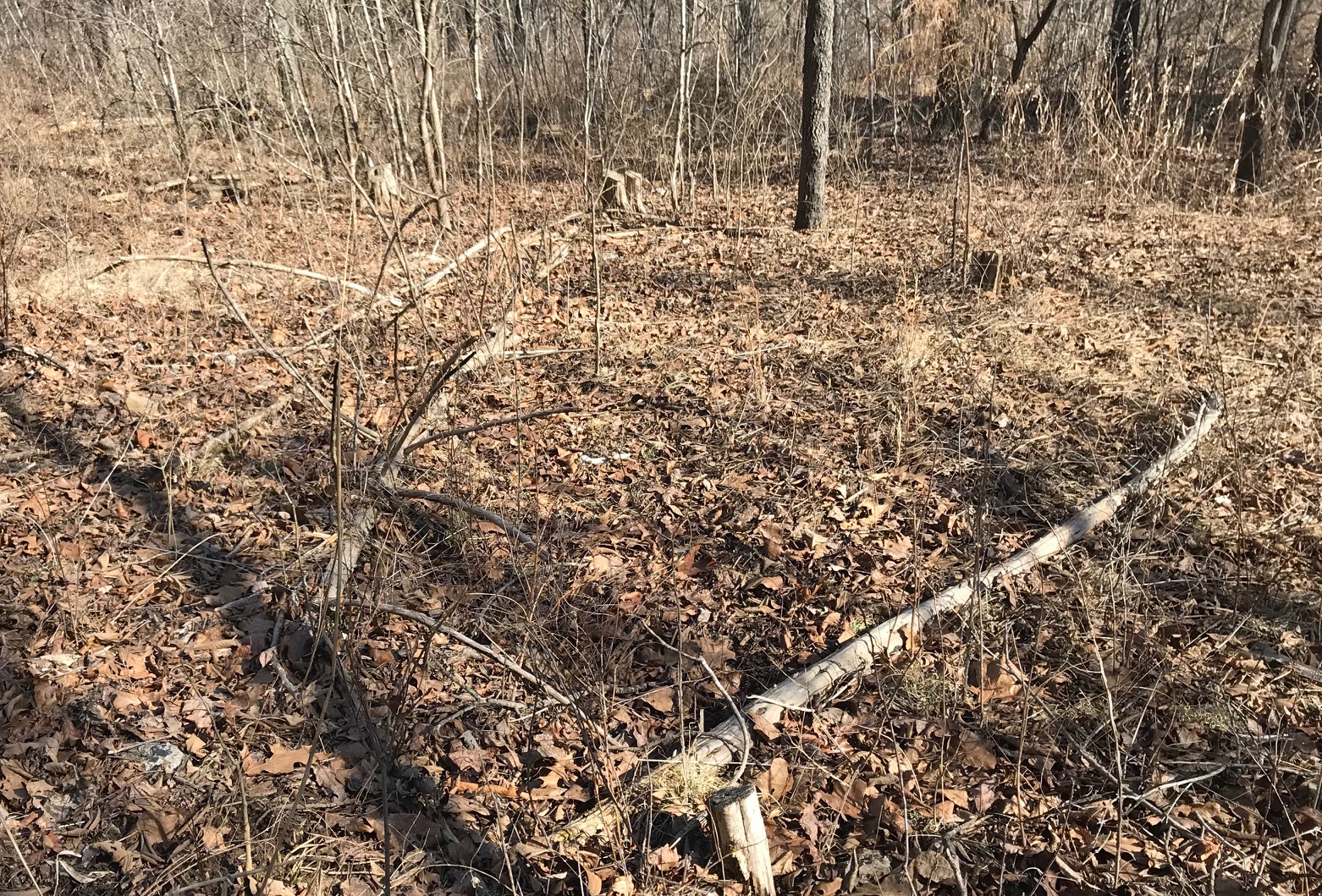
Frequent fool while shed hunting: old bones (look closely – center of image.)
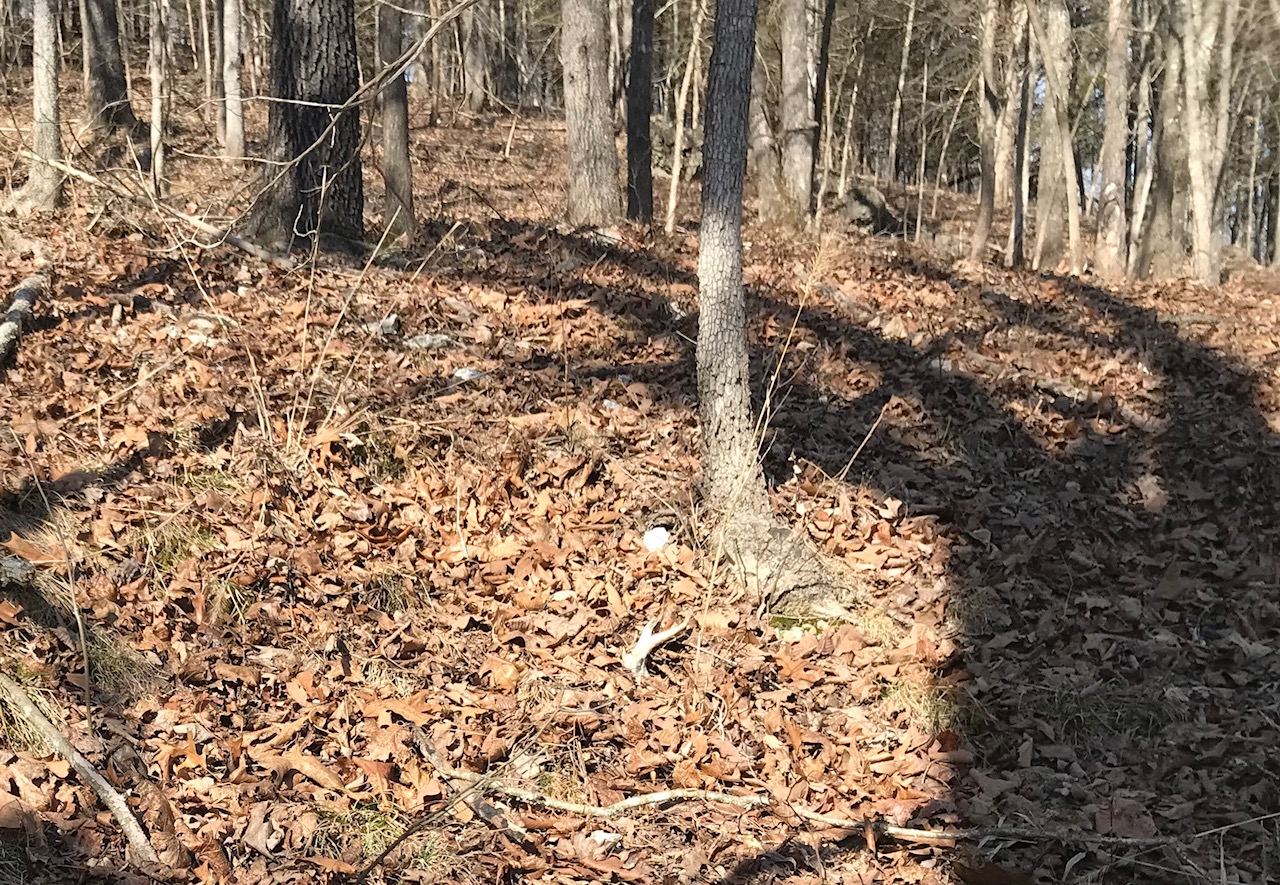
Limbs and sticks in the shape of an antler or an antler tine can fool shed hunters.
From a distance there’s just enough similarity to an antler to make you quicken your step to get a few feet closer to see if it’s really an antler or….not. I turn that disappointment around to serve as motivation to keep going and searching for the real deal.
This week I was ending a shed hunt without any antlers in my backpack. It was time to leave the woods so that I had time to get ready for Wednesday night Bible study. Just before I turned to head to the truck, I caught a glimpse of white on the slope just above me. I found not one, but two nice antlers within 4 feet of each other. Now that was a great way to end a hike! The reward for being persistent and staying motivated was at the end of the trail.
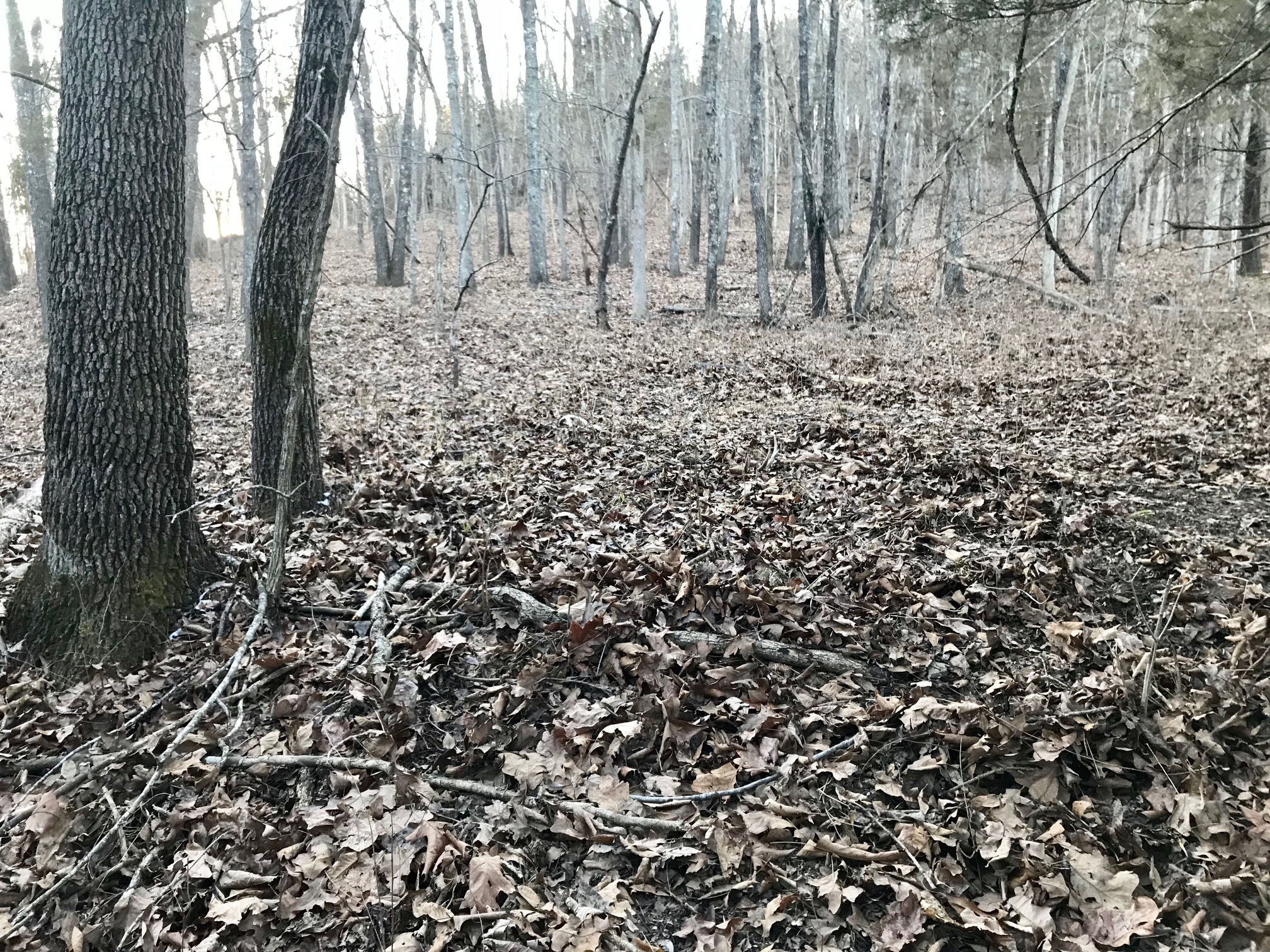
A reward at the end of the trail: 2 antlers! Test yourself. Can you spy them?
Next time you’re shed hunting. Don’t give up. Stay motivated and get back out there!
Hunting shed antlers,
Tracy
Why White-tailed Bucks Shed Their Antlers
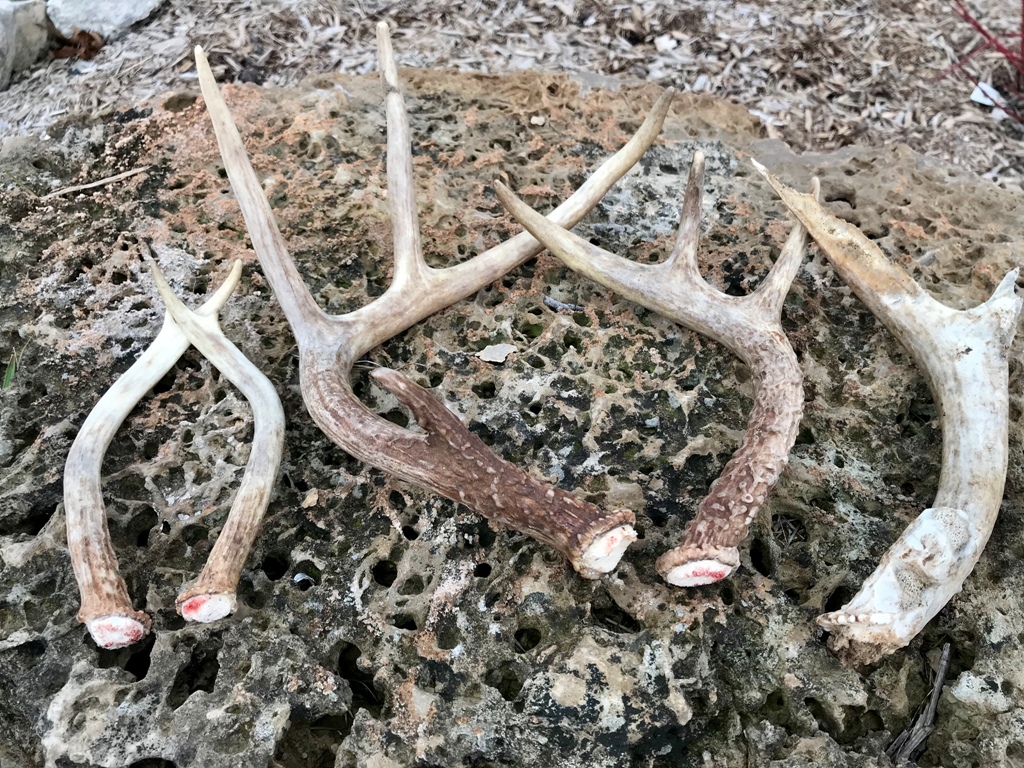
Do the bucks in your area have still have their antlers? We’ve got a few bucks that have already started shedding their antlers here at The Proving Grounds!
Antlers are shed as a response to chemical changes within a buck’s body. These changes are generally stimulated by changes in the amount of time the sun shines daily.
However, within this window, several factors such as available nutrition, general health, and dominance ranking can determine when an individual buck sheds his antlers. For example, deer researchers often mention observing two dominate bucks in captivity fighting during this time of year. The loser will shed his antlers soon (sometimes the next day). It seems hard to imagine that antlers will simply fall off one day due to a change in dominance status (along with hormone levels) but these examples seem to indicate that’s the case. Never underestimate the effects of hormones on all critters!
Antlers for most bucks tend to be shed during the late winter months. However, some bucks will shed earlier due to other factors.
Those “other factors” explain my expectation for bucks to shed earlier than normal this year. Why? Because bucks will shed early when they are stressed. We’ve had ongoing drought conditions so our food plots and the native deer browse have suffered.
To a deer manager, forage plants are simply nutrient transfer agents. They simply transfer nutrients from the soil and air to the consumer (deer). No matter how many nutrients are available, plants can’t transfer nutrients without water. Soil moisture was so limited this year that the plants simply couldn’t transfer many nutrients. The drought directly and indirectly caused a huge amount of stress to bucks in my area this year.
Tracy took Crystal, our Labrador shed hunting dog, to one of our larger food plots this week to see if they could find any of those early sheds. In less than 2 hours they found four fresh shed antlers from some of our younger bucks. In addition, we’ve seen at least two mature bucks that have already lost their antlers. It seems my buck hunting may be over soon even though the legal season where I live extends to January 15th.
As you’re finding shed antlers this year, please share them with us on our Facebook page!
Enjoy Creation,
Grant
Providing Minerals for Deer Herd Health
The first signs of spring are popping up all around us here in southwest Missouri. Wildflowers are beginning to bloom, spring peepers are out at night, and many Ozark critters are already out of hibernation. An early spring is upon us! This is good for whitetail growth because it brings an end to the winter stress period. With spring green-up, deer will begin to recover the weight they lost during the winter and start to stock up on minerals that they will later use for antler growth or fawning.
It’s important to have forage and minerals available on your property year round. This gets most deer through the stress period and keeps them around for spring green up. In addition to our food plots, we use Trophy Rock as a supplement mineral year-round. The deer will initially store these minerals in their skeleton, and when the time is right, their bodies will convert the minerals into a form that they will use to grow antlers or for fawning.
Providing a steady supply of minerals throughout the year, along with quality forage and age, helps deer reach their genetic potential. With spring just around the corner, now is a great time to start providing Trophy Rock to the deer where you hunt. Not only will you be supporting the health of the deer population after their most stressful time of the year, you’ll also have a great spot to stick a game camera and check out the post-season deer population on your property.
Enjoy creation,
Jessica
Why Bucks Shed Their Antlers
If you are planning to spend the next few weeks in a stand trying to fill your remaining tags, listen up. We’ve already received several reports of shed bucks across the whitetails’ range. At The Proving Grounds, our Reconyx cameras recently captured a young buck that had already shed one of his antlers. The time stamp read December 11th!
What causes bucks to shed? The answer has much to do with decreasing testosterone levels.
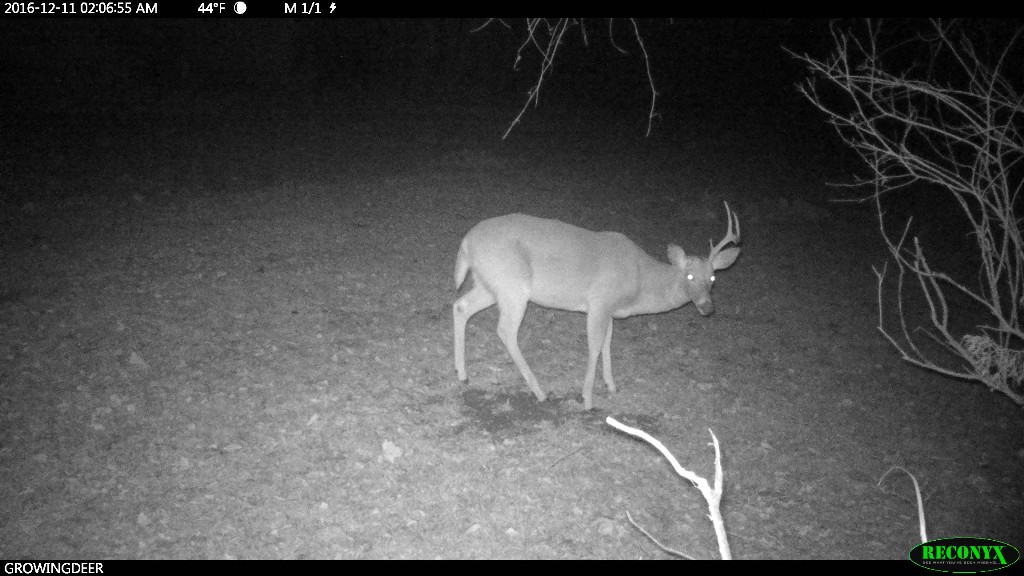
It may seem early, but there are many factors influencing when antlers will fall.
The photoperiod, or the hours of sunlight in a day, greatly influences testosterone levels. As the daylight hours begin to increase during the winter months, a buck’s testosterone level begins to decrease. The opposite occurs in the summer. As daylight hours grow shorter in late summer, testosterone levels increase and prompt velvet bucks’ antlers to harden then shed.
Testosterone levels are also influenced by stress. Stress can come in many forms. Deer can become stressed if they’re pressured by predators such as coyotes or hunters. Stress can also come hand in hand with an injury. If injured, a buck may experience extreme physical stress as the body begins focusing on healing and survival. Nutrition, especially during cold winter days, can also play a huge role in whether a buck becomes overly stressed. Many times healthier bucks retain higher testosterone levels and will hold their antlers longer.
It may sound “early” to hear that bucks are already shedding. However, daylight hours have just begun to increase again. Across much of the whitetails’ range the rut is over. Bucks have recently fought and traveled many miles, increasing the likelihood of being injured. Colder temperatures have swept across most of the United States and quality food sources may be hard to find. Testosterone levels will continue to fall and so will the antlers.
If you are headed to the woods during the next few weeks, remember that some bucks in your area may have already shed their antlers. It can be frustrating if you are trying to fill the freezer and mistake a shed buck for a doe. As you look through your trail cameras pictures be looking for shed bucks on your property. Knowing if bucks have begun shedding in your area can help.
I hope everyone has a blessed Christmas and a great late season hunt!
Enjoying Creation,
Daniel
How To Capture Bucks On Film
We’ve got antlers on the brain! It’s just the start of the summer and we are starting to see a few hitlisters show up. It’s important for us to keep track of the growth progress as well as the health of the deer herd. To do so, we must place our trail cameras in the appropriate places. If your hunting ground is in timber country like ours, it’s important to place cameras on the limited resource in the area. We place our Reconyx cameras near the source of high quality vegetation. This typically means along the edges of a food plot. We also set out Trophy Rock Four65 to provide mineral to the deer herd. Both bucks and does will use these mineral sites heavy during the summer months. This combination usually results in some awesome videos of velvet bucks; you can even begin to develop your hitlist for this fall!
Enjoy Creation,
Matt



